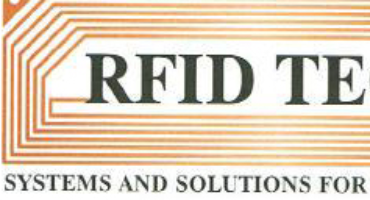Here's how this process works and its benefits:
1. Tag Integration during Manufacturing:
During the manufacturing process of an asset (e.g., electronic devices, machinery, automotive parts, industrial equipment, or consumer goods), UHF RFID tags are integrated into the asset.
The tag can be encapsulated within the asset's structure or embedded in a way that doesn't interfere with the asset's functionality or aesthetics.
This integration can be achieved through various methods, including embedding the tag within the asset's plastic or metal components, using adhesive-backed RFID labels, or even embedding the tag in epoxy or resin.
2. Unique Asset Identification:
Each RFID tag has a unique identification number or code that is associated with the specific asset.
This unique identifier allows for precise tracking and management of individual assets throughout their lifecycle.
3. Supply Chain Management Benefits:
Inventory Tracking: RFID-enabled assets can be automatically tracked and recorded at various points along the supply chain, from manufacturing facilities to distribution centers and retail stores.
Real-time Visibility: The use of UHF RFID technology provides real-time visibility into the location and status of assets, allowing for better control of inventory and improved supply chain logistics.
Reduced Errors: Automated RFID systems reduce the risk of manual data entry errors, improving data accuracy and reducing the likelihood of lost or misplaced assets.
4. Maintenance and Lifecycle Management:
RFID tags can store additional information about the asset, such as its maintenance history, warranty information, and manufacturing date.
This data can be accessed and updated throughout the asset's lifecycle, aiding in maintenance scheduling, compliance tracking, and overall asset management.
5. Anti-Theft and Loss Prevention:
RFID-enabled assets can be tracked even if they are stolen or misplaced, which can help deter theft and improve asset recovery efforts.
6. Data Analytics and Reporting:
RFID data collected throughout the supply chain can be analyzed to gain insights into asset movement, utilization, and performance.
These insights can inform decision-making, optimize asset allocation, and support predictive maintenance strategies.
7. Improved Compliance:
For industries with regulatory requirements (e.g., healthcare, aerospace, or automotive), RFID tagging ensures compliance by providing a reliable and auditable record of an asset's history and usage.
By integrating UHF RFID tags into assets during manufacturing, organizations can streamline their supply chain operations, enhance asset visibility, reduce costs associated with manual tracking, and improve overall asset management and security. This technology plays a crucial role in modernizing and optimizing supply chain processes across a wide range of industries.

